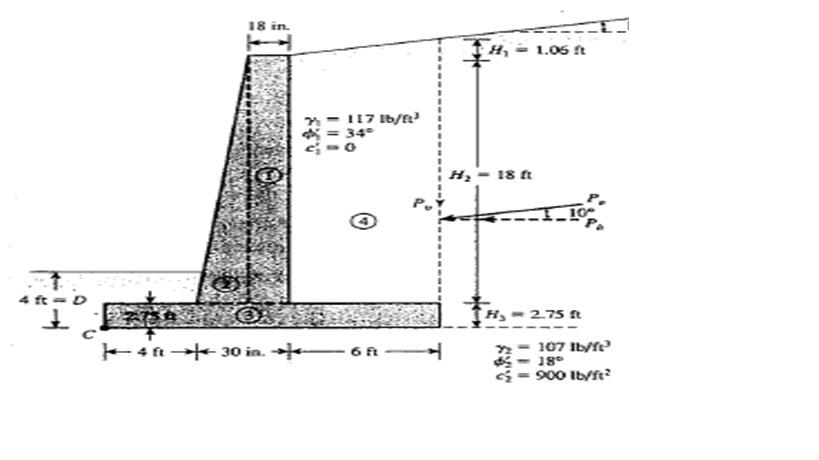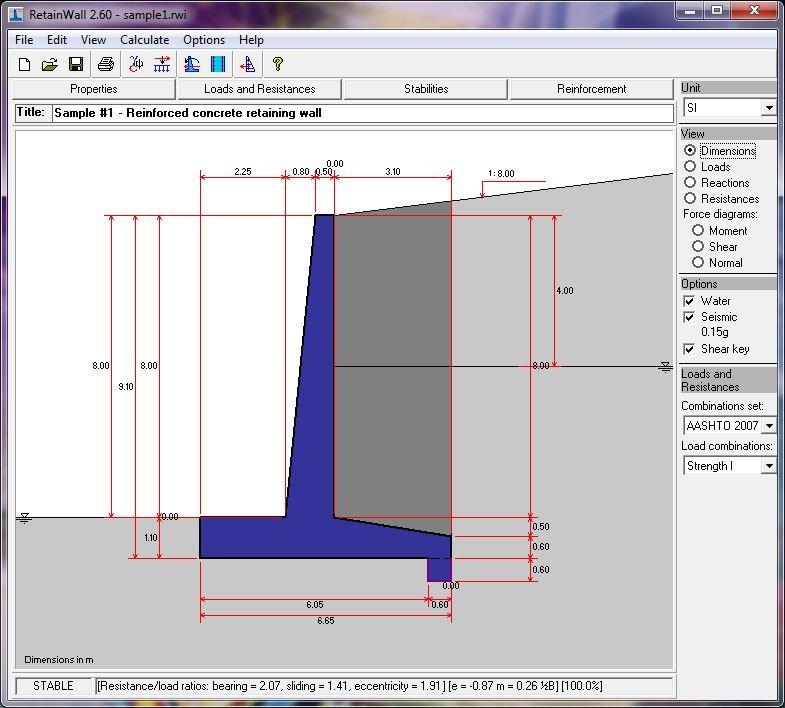Retaining Wall Design Calculator
A retaining wall design calculator is a tool that helps engineers, architects, and builders to design safe and effective retaining walls by performing the necessary calculations. Retaining walls are critical in various construction projects, as they provide lateral support to soil and prevent soil erosion or landslides. To ensure a safe and practical design, it is essential to consider various factors such as soil properties, wall materials, and the surrounding environment. This comprehensive guide will provide detailed information on retaining wall design calculators, their importance, and their key features.

Importance of Retaining Wall Design Calculators
1. Safety: A properly designed retaining wall prevents soil collapse and ensures the safety of people and nearby structures.
2. Cost-effective solutions: An accurate retaining wall design reduces the likelihood of costly failures and unnecessary material usage.
3. Regulatory compliance: The design calculator helps professionals adhere to building codes and regulations, avoiding potential legal issues.
Key Features of Retaining Wall Design Calculators
1. Geotechnical parameters: The calculator considers soil properties (such as cohesion, friction angle, and unit weight) to determine the lateral pressure exerted on the wall.
2. Wall geometry: The tool considers the wall’s dimensions, such as height, length, and thickness, to calculate the required structural strength.
3. Material properties: By considering the wall material’s properties (e.g., concrete, masonry, timber), the calculator determines the appropriate safety factors and structural requirements to ensure stability and durability.
4. Load calculations: The calculator evaluates various load types, including dead loads, live loads, and surcharge loads, to determine the overall stability of the retaining wall.
5. Drainage considerations: Proper drainage is essential to prevent water buildup and hydrostatic pressure, which can compromise the wall’s stability. The design calculator helps users identify and incorporate suitable drainage solutions.
6. Global stability analysis: The tool conducts a comprehensive stability analysis, evaluating factors such as the sliding, overturning, and bearing capacity of the retaining wall.
7. Safety factor calculations: Retaining wall design calculators determine the safety factors for various failure modes, ensuring the wall’s design meets or exceeds the recommended safety guidelines.

How Retaining Wall Design Calculator Can Be Chosen Wisely?
Choosing the right retaining wall design calculator is essential to ensure that the retaining wall design meets the necessary safety requirements and is cost-effective. Here are some factors to consider when choosing a retaining wall design calculator:
1. Ease of use: The calculator should be easy to use and navigate, with clear instructions and user-friendly interfaces. A complicated and difficult-to-use calculator can lead to calculation errors and ultimately impact the safety and stability of the retaining wall design.
2. Features: The calculator should include all the necessary components, such as geotechnical parameters, wall geometry, material properties, load calculations, drainage considerations, global stability analysis, and safety factor calculations.
3. Accuracy: The calculator should provide accurate results to ensure the retaining wall design meets industry standards and guidelines.
4. Compatibility: The calculator should be compatible with various devices, including smartphones, tablets, and computers, to ensure that professionals on the go can access it.
5. Support: The calculator should have adequate support, including help manuals and technical support, to address professionals’ issues or queries.
6. Reviews: It is always advisable to read reviews from other professionals who have used the calculator before to assess its effectiveness and accuracy.
Considering these factors, professionals can choose a retaining wall design calculator that meets their requirements and helps them design safe, effective, and durable retaining walls.
How to Use a Retaining Wall Design Calculator
1. Input geotechnical parameters: Enter the soil properties, such as cohesion, friction angle, and unit weight, to determine the lateral pressure exerted on the wall.
2. Define wall geometry: Provide the wall’s dimensions, such as height, length, and thickness, to calculate the required structural strength.
3. Select material properties: Choose the wall material (e.g., concrete, masonry, timber) to determine the appropriate safety factors and structural requirements.
4. Enter load information: Input the various load types, including dead loads, live loads, and surcharge loads, to determine the overall stability of the retaining wall.
5. Incorporate drainage solutions: Identify and input suitable drainage solutions to prevent water buildup and hydrostatic pressure.
6. Review results: The calculator will perform a comprehensive stability analysis and provide safety factor calculations. Review the results to ensure the wall’s design meets or exceeds the recommended safety guidelines.
Read More: Insulation Calculator

Conclusion
A retaining wall design calculator is an essential tool for engineers, architects, and builders, ensuring the wall’s stability, durability, and safety. By inputting the necessary information, such as geotechnical parameters, wall geometry, material properties, load information, and drainage solutions, the calculator can perform a comprehensive analysis and provide appropriate safety factors and structural requirements. This ensures the final retaining wall design adheres to industry standards and guidelines, reducing the risk of failure and potential hazards.
FAQs
What is a retaining wall design calculator, and what is its purpose?
A retaining wall design calculator is a tool that helps engineers, architects, and builders design safe and effective retaining walls by performing the necessary calculations.
Why are retaining wall design calculators essential?
Retaining wall design calculators are essential because they ensure the safety of people and nearby structures by preventing soil collapse. They also reduce the likelihood of costly failures and unnecessary material usage while helping professionals adhere to building codes and regulations.
What are the key features of a retaining wall design calculator?
The key features of a retaining wall design calculator include geotechnical parameters, wall geometry, material properties, load calculations, drainage considerations, global stability analysis, and safety factor calculations.
How does a retaining wall design calculator help ensure safety?
A retaining wall design calculator ensures safety by evaluating the lateral pressure exerted on the wall due to soil properties, calculating the required structural strength based on wall geometry, considering the appropriate safety factors and structural requirements based on the wall material’s properties, and evaluating the stability of the wall based on load calculations, drainage considerations, and global stability analysis.
What factors does a retaining wall design calculator consider when calculating the lateral pressure exerted on the wall?
When calculating the lateral pressure exerted on the wall, a retaining wall design calculator considers soil properties such as cohesion, friction angle, and unit weight.

